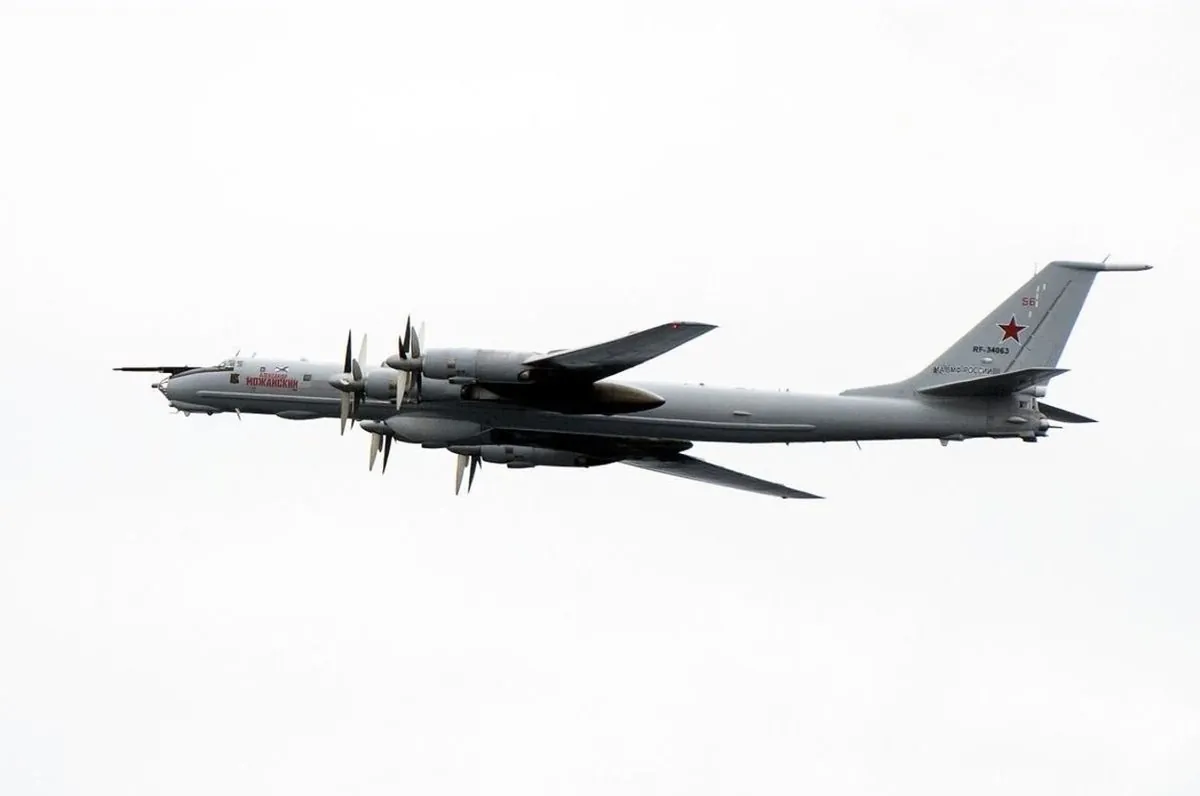Russian Military Maneuvers: From Alaska to the Black Sea
Recent Russian aircraft activity near Alaska and a missile attack in the Black Sea reveal Moscow's stretched resources. These events, seemingly unrelated, demonstrate the global nature of military strategy and resource allocation.

Recent events involving Russian military activities in disparate locations highlight the interconnected nature of global strategic operations. Russian aircraft have been observed entering the US Air Defense Identification Zone (ADIZ) near Alaska, while a missile attack on a Ukrainian grain ship occurred in the Black Sea. These incidents, though geographically distant, are potentially linked through the lens of military resource allocation and strategic maneuvering.
In the vicinity of the Bering Strait, Russian aircraft entered the US ADIZ on multiple occasions. While this action does not violate US territorial airspace, it is noteworthy. The timing and nature of these flights suggest an operational purpose rather than a mere show of force or planned exercise. Experts believe the Russian aircraft were attempting to track a US nuclear-powered submarine navigating through the Bering Strait.
The Bering Strait has been a crucial route for US submarines since the 1950s, serving as the sole viable passage from the Pacific to the Arctic. Despite its narrow navigable channel, US Navy submarine captains have successfully traversed this area undetected numerous times. However, in this recent instance, it appears Russian forces managed to gain sufficient intelligence to deploy specialized maritime patrol aircraft equipped with underwater detection capabilities.
Simultaneously, in the western Black Sea, a Russian missile strike targeted a merchant vessel carrying Ukrainian wheat. This attack, executed by a Tupolev Tu-22M "Backfire" bomber launching an AS-4 "Kitchen" anti-ship missile, demonstrates Moscow's determination to disrupt Ukrainian grain exports. The strike on the MV Aya, carrying 26,550 tons of wheat bound for Egypt, occurred on September 11, 2024.
The connection between these events lies in the allocation of Russian military resources. The Ukraine conflict has stretched Russian air and maritime capabilities thin. With a limited number of operational aircraft, particularly maritime patrol planes like the Tupolev Tu-142 "Bear-F/J" and Ilyushin Il-38 "May", Russia faces challenges in maintaining effective coverage across its vast territories and areas of interest.
Russian warships have largely retreated to the eastern Black Sea, leaving aircraft as the primary means of locating and tracking ships in the western region. However, the absence of dedicated maritime patrol aircraft in the Black Sea Fleet complicates this task. The recent missile strike likely relied on a combination of human intelligence, satellite imagery, and Automatic Identification System (AIS) data to target the grain ship.
"The only maritime aircraft available to the Black Sea fleet were ancient Beriev flying boats, largely useless for this sort of thing."
This situation presents a strategic dilemma for Russian military planners. The need to monitor US submarine movements in the Bering Strait and maintain coverage in the Greenland-Iceland-UK Gap limits the availability of maritime patrol aircraft for operations in the Black Sea. This constraint may have influenced the decision to use a less precise targeting method for the grain ship strike, potentially risking unintended consequences such as hitting a vessel in NATO member Romania's territorial waters.
It's possible that US strategists are aware of this resource allocation challenge and are using submarine movements to deliberately draw Russian maritime patrol aircraft away from the Black Sea. Such a tactic would align with the concept of "gray-zone" activities, which Western navies often face in areas like the Southern Red Sea due to Houthi activities.
As these events unfold, it becomes clear that military operations in seemingly unrelated parts of the world can have significant impacts on each other. The interplay between US submarine movements and Russian air-sea power in the Black Sea demonstrates the complex, interconnected nature of global military strategy and resource management.


































